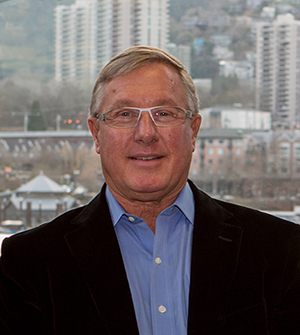Viewpoint’s Jay Haladay recently announced his decision to retire from his position as CEO of the company, one he has held for the past 30 years. CBO recently talked retirement, employee management and business best practices with him. Haladay will remain on the board of directors for Viewpoint, and said he still plans to travel frequently and attend events for the company. Read his advice below. 
CBO: For those transitioning into retirement, what advice do you have for leaving the company in the best condition possible?
JH: Someone asked me a long time ago, ‘When do you think about succession planning?” And the answer is, I think about it constantly. You never know when you are going to need to exercise that plan. I have almost 800 employees, and almost 8000 customers. This is still the largest asset our family owns. If something would have happened during a trip or in daily life, it is vitally important that we have a succession plan in place. Having that plan also made it easier to make my decision to retire when I did. I was able to leave on my own timeframe. There is an unfortunate feeling among business owners that they are invincible. Nothing is forever, and one of the worst things you can see is an owner who has been running his business for five years too long. You get older. It’s going to happen. It’s in everyone’s best interest to plan for that.
CBO: How do you determine when it is time to begin that transition?
JH: Be proactive. Watch yourself. Part of being able to step away from this involves knowing that the chapter you are entering will be enjoyable and exciting, too. When you start squeezing your personal life into your business life, instead of squeezing business into your personal time, it’s time to change your priorities. Do it while you are still vibrant and healthy. CBO: In your 30 years in the construction technology industry, what is the most notable change you have seen in the construction software space? JH: I think we have a generational shift going on currently and for many of the last 30 years. Construction owners and employees put up with decayed technology. As new generations of workers are coming into the business and moving into decision-making positions, though, there is a lot less tolerance for outdated technology. This is healthy. People want to adopt to these new construction applications, but it takes a changing mindset. It’s happening at a faster pace now. CBO: What do you consider to be the strongest technology tool for construction business owners in the industry today? JH: I’m a big believer in keeping things simple. There will always be an interesting new widget or software. We have all seen examples of companies that come and go in a heartbeat. Construction technology buyers should find a great partner. When purchasing technology for your business, don’t go with a company that might be gone in the near future and leave you with an orphan product. You’ve built processes and procedures around these products, so choose a business with staying power and a long-term vision. Pick a business with a long-term investment in a good management scheme that can grow with the company. Haladay had one tenet that encompassed all the rest of his advice: “Set out to build a business, a team and a product that will thrive while you are actively involved and outlive you when you aren’t.” For more information, visit Viewpoint.
